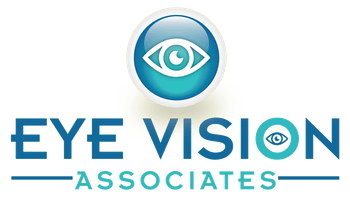 Myopia (nearsightedness) is a vision condition that causes distant objects and images to appear blurry. It develops when the eye is too long or the cornea – the front covering of the eye – is too curved.
Myopia (nearsightedness) is a vision condition that causes distant objects and images to appear blurry. It develops when the eye is too long or the cornea – the front covering of the eye – is too curved.
Both genetic and environmental factors have been shown to increase a child’s risk of myopia. But now, researchers have discovered that childhood obesity may be a risk factor for myopia progression and high (severe) myopia.
In recent years, high myopia has become a growing concern among eye care professionals because it raises the risk of developing sight-threatening eye conditions in adulthood.
The Link Between Obesity and High Myopia
According to the American Academy of Ophthalmology (AAO), high myopia is more prevalent among children with higher body mass index (BMI) levels.
Starting in 2016, a study involving 1,114 Korean children and adolescents (aged 5 to 18) was conducted to determine whether there is a correlation between childhood obesity and high myopia. Data was collected for each participant detailing any family history of myopia, diagnosis of a refractive error, waist circumference and BMI.
The results of the study found that the overweight and obese participants were at a greater risk for high myopia, compared to those with normal BMI levels.
Although a firm link between obesity and high myopia has yet to be established, it is important for parents to be aware that their child’s weight could potentially impact not only their general health, but their eye health as well.
How Is Progressive Myopia Treated?
Myopia typically progresses gradually until the eyes reach their adult size, usually at around age 20. However, progressive myopia that requires stronger vision correction each year can be a cause for concern, as it can increase the risk of vision-robbing eye diseases later in life, such as glaucoma, macular degeneration and retinal detachment.
Fortunately, myopia management has been proven to help slow or even stop myopia progression. In fact, several studies show that myopia management can slow myopia progression by up to 78%.
At Eye Vision Associates, we offer personalized myopia management programs to help protect your child’s eyes and vision. Contact us today to book an appointment.
Q: Is myopia dangerous for children?
- A: While myopia is not a dangerous vision condition in and of itself, higher levels of nearsightedness can increase a child’s risk of developing glaucoma, cataracts, retinal detachment and macular degeneration in the future.
Q: Is my child a candidate for myopia management?
- A: Most children with myopia are candidates for a myopia management program. Although it is best to begin a treatment program as early as possible, many older children and young adults can also benefit from myopia management.
Our practice serves patients from Nesconset, Ronkonkoma, Lake Grove, and Centereach & Hauppauge, New York and surrounding communities.
References:
